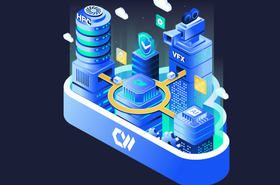Metaverse is an alternate universe, a virtual world built with virtual reality and augmented reality to simulate the physical world. Accessing this universe involves wearing a headset that immerses the wearer into the 3D world, interacting with others using similar technology and who have jumped into that augmented reality with them.
But fathoming the metaverse means accepting the notion of a persistent virtual world- always up and available for its users. When we look at the digital world, the possibilities are vast – where digital copies of ourselves and simulations of our real-world are translated to a digital world where the laws of the natural world are suspended. Multi-national companies like Microsoft and even Disney are staking their claim in the metaverse with digital twins or brand new realms integrated into Meta’s Horizon concept.
With the endless options available in the metaverse, we can imagine the myriad ways we will interact with it and how it coexists with our personal realities.
Still emerging
The metaverse is still in its emerging phase according to Gartner, the IT research and consultancy group. The metaverse market will begin to open with experimental applications and use cases through established technologies like augmented and virtual reality. This will soon be followed by the advanced stage where content will become king with data becoming the focus in terms of analyzing the relationships between the physical, the digital, and the physical and digital combined. New businesses and applications will develop from understanding these relationships. By 2030, the true metaverse will start to appear. Building upon the new applications of the advanced stage and powered by mature hardware, infrastructure will become the primary focus with vendors working to create the true backbone of a transformational and ubiquitous digital world.
Digital twins and self-contained virtual worlds exist, are evolving and functioning. However, the growth, progression, and evolution of a fully functioning metaverse, through the delineated points will require computing power on a scale that is difficult to comprehend, but necessary for it to come into being.
Computing on a giant scale will be required to bring the metaverse to fruition. Consider the notion of creating a digital twin for every person on earth (that’s 7.8 billion people) and the worlds in which they will live, as well as the requirement of keeping this virtual world up and running all day every day – like any other real day on this planet. The power needs will be massive and intentional. For instance, when physical economies and systems come together in the virtual world, the amount of data created to keep them aligned, to power the algorithms that will keep functions on and moving forward, will be massive and the needed computing power will be, as well. For the metaverse to be up and available 24x7x365, it will require an entirely new computing paradigm – the most powerful and available ever – to support all that it will demand for its existence.
It’s been established that the metaverse will require unprecedented computing power. But to grow, change, and adapt like the real world, it will also require adaptive, intelligent software and hardware. The hardware will support the unprecedented level of power needed with software bringing together the different tools and algorithms that will work together to animate this virtual world. Combining software tools and algorithms with the most powerful computing solutions available will reveal all that the metaverse will have to offer its participants.
What hardware will we need?
It’s the bringing together of the real people we are and the places we go with the digital data needed that will inspire the best versions of a server that can truly power the metaverse. For programmers and creators, digitally recreating the world that we know, in as much detail as possible means designing complex, compute-intensive digital backgrounds and settings. The four pillars of the metaverse provide the jumping off point:
- Collaborative creation – Where the hardware side of the metaverse works directly with software developers to understand each other’s requirement in the race to create an ideal digital experience.
- High-precision simulation – The more realistic, the better. The more realistic, the more compute intensive.
- Real-time rendering – Referring back to the real world and forward to the digital to ensure the two sync up.
- Intelligent interaction – All participants in the metaverse will expect to interact with this new world and its inhabitants similarly to how they interact now in the physical world. This is not a lofty expectation. A high-level experience will be key to metaverse adoption.
Each of these points has increasing needs for bigger, more powerful computing and software. Computing on the scale of supporting thousands of digital architects, creating changing virtual scenarios every second while hosting thousands and later millions of users in a 3D digital world. Creating these complex digital twins, and various environmental simulations, requires an all hands-on deck approach. The cloud is supporting this collaboration being redefined by AI technology.
AI is the steam behind the metaverse train coming down the track, as it provides the “I” in intelligent interaction, while driving the learning curve and growth process of the metaverse forward. As the accuracy of simulation improves and AI learns from what has come before, it is predicted that over time it will also increase how quickly it can create and modify environments, scenes and even people to bring an unprecedented level of realism for metaverse participants.
Dedicated capacity required
The bottom line for the metaverse to exist and grow will be a dedicated server developed specifically to support the tools and technologies required to uphold and allow for the evolution of the metaverse. This computer must be the backbone with integrated hardware and software that will bring to life digital twins, virtual worlds and support these large-scale, multifaceted, and highly accurate simulations.
Here we are on the cusp of jumping into digital worlds. The creation of them means completing four points: creation, simulation, real-time rendering, and interaction – each requires more computing power and software than the one before it. What will it take to make the metaverse an everyday part of our lives? A place where all people’s energy, intelligence and technology come together in one forum – making the leap to the digital world seem not so foreign. Here, someday, we will see millions of digital humans, running thousands of organizations. Building the metaverse has begun.





